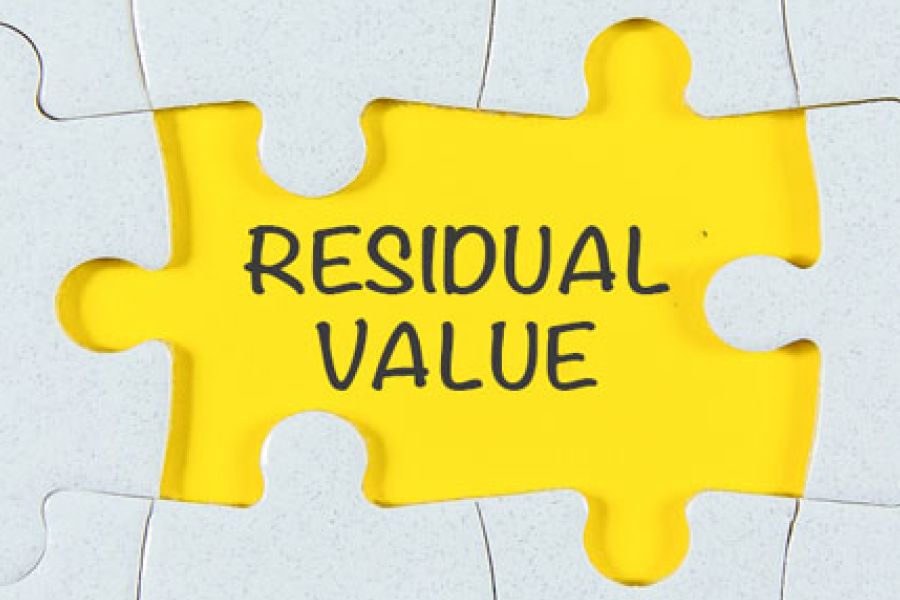Goodwill is one of the most confusing aspects of valuing a business interest for divorce cases. In many states, goodwill needs to be valued and then divided into two pieces: business and personal goodwill. Unfortunately, significant differences in methods and theories exist on this complex issue, as recent case law demonstrates. Key definitions According to the International Valuation Glossary — Business Valuation, “Goodwill can arise as a result of name, reputation, customer loyalty, location, products, and similar factors not separately identified.” A business interest may possess two types of goodwill: Business (or entity) goodwill. This belongs strictly to the entity itself. Business goodwill may arise from many sources, including the company’s name, phone number, location and special attributes, such as special menu items or recipes at...

Limited liability companies (LLCs) sometimes award employees and contractors a unique form of equity-based compensation known as “profits interests.” These interests aren’t actively sold on a public market, so a customized valuation approach is required. Here’s an overview of how business valuation pros determine what these awards are worth for tax and financial reporting purposes. The basics Finding skilled workers is one of the top challenges reported by private businesses today. Employers may award various forms of equity-based compensation to help attract, retain and reward workers for their contributions to the company. LLCs aren’t allowed to issue traditional corporate forms of equity compensation, such as common and preferred shares, stock options, restricted shares and phantom stock. Instead, they can award profits interests to certain employees and contractors for...
Summer can bring extreme weather, including floods, droughts, wildfires, tornadoes and hurricanes. These natural disasters and other crises can interrupt normal business operations, causing significant financial losses. If disaster strikes, a business interruption insurance policy can allow you to recoup lost profits, repair damaged assets and cover other incremental expenses. When a covered event has occurred, a business valuation professional can help explain what’s covered and calculate how much you’re entitled to recover. Coverage basics Business interruption insurance is arguably one of the most complicated insurance products on the market today. And most policies require claims to be filed in a relatively short period of time (often within 30 days). In addition to replacing any damaged assets, such as inventory or machinery, a business interruption policy typically covers lost...
Reasonable (or replacement) owners’ compensation can be a hot button during IRS audits, divorces, shareholder disputes and other litigation matters involving the value of a private business. What’s appropriate depends on the facts and circumstances. Applying federal tax guidance The IRS is on the lookout for C corporations that pay employee/shareholders excessive salaries in place of dividends. This tactic lowers the overall taxes paid because salaries are a tax-deductible expense and dividends aren’t. Owners pay income tax on salaries at the personal level, but dividends are subject to double taxation (at the corporate level and at each owner’s personal tax rate). If the IRS decides that a C corp is overpaying owners, it may reclassify part of the owners’ salaries as dividends. For S corporations, the IRS looks...
The balance sheet — which shows a company’s assets and liabilities — is a logical starting point for valuing certain types of businesses. The cost (or asset) approach specifically focuses on this part of a company’s financial statements. Here’s an overview to help you understand this valuation technique. How does it work? When valuation professionals apply the cost approach, they convert the book values reported on the balance sheet to their respective fair market values. There are three key reasons that book value may not reflect fair market value to a hypothetical buyer or seller: 1. Use of historic cost. Under U.S. Generally Accepted Accounting Principles (GAAP), assets are recorded at historic cost. Over time, historic cost may understate market value for appreciable assets, such as marketable securities...
When valuing a business using the discounted cash flow method, residual (or terminal) value is a key component. The International Valuation Glossary — Business Valuation defines residual value as “the value as of the end of the discrete projection period in a discounted future earnings model.” Business valuation experts typically consider the capitalization of earnings method and the market approach when estimating residual value. Either (or both) may be appropriate, depending on the nature of the business, purpose of the valuation, reliability of the company’s financial projections and availability of market data. Capitalizing earnings The capitalization of earnings method is based on the assumption that cash flow will stabilize in the final year of the projection period. However, this is also the time period that’s subject to the...
Employee stock ownership plans (ESOPs) provide tax-saving opportunities for business owners who want to cash out and transfer ownership to employees without immediately giving up control of the business. However, valuing stock held by an ESOP is an ongoing challenge for the fiduciaries who administer them, especially when the sponsoring company is privately held. Valuation requirement An ESOP is a type of qualified retirement plan that invests primarily in the sponsoring company’s stock. There are about 6,500 ESOPs and equivalent plans in the United States today, employing roughly 14 million U.S. employees, according to the National Center for Employee Ownership. ESOPs are subject to the same IRS and U.S. Department of Labor (DOL) rules as other qualified retirement plans, including minimum coverage requirements and contribution limits. The fair...
In mergers and acquisitions (M&As), there are some buyers who are willing to pay a premium above the fair market value of the business on a controlling basis. This premium typically is the result of cost-saving or revenue-building synergies that a specific buyer can potentially gain by acquiring the seller’s business. When selling a business, it makes sense to find a buyer who’s willing to pay the highest possible price. Here’s some guidance to help identify synergistic buyers and establish a reasonable asking price. What is synergistic value? According to the International Valuation Glossary — Business Valuation, synergistic value is “the result of a combination of two or more assets or interests where the combined value is more than the sum of the separate values.” This often results...
Valuing a private business is a complex endeavor. But, when all is said and done, valuation analyses boil down to three general approaches. 1. Market approach Under this approach, valuators derive pricing multiples from public or private comparable transactions. These pricing multiples are then applied to the subject company to derive its value. For example, an expert might calculate a median price-to-earnings multiple of 4.5 based on a sample of six comparable transactions. Then the valuator would multiply the subject company’s earnings by 4.5 to arrive at its value. The expert also must consider whether adjustments are warranted to account for the differences between the subject company and comparable firms. Two popular methods fall under the market approach. First, the guideline public company method uses the prices paid for...
Purchase price allocations are an important part of negotiating a successful M&A transaction. The value of most assets — such as receivables, inventory and equipment — may be fairly straightforward. But the value of non-compete agreements is often a sticking point. To complicate matters, the buyer and seller may have conflicting tax objectives. This is because the buyer must amortize the amount allocated to non-competes over 15 years, whereas the seller must recognize the allocation as ordinary income. When the buyer and seller allocate different amounts to a non-compete agreement on their respective tax forms, they may trigger unwanted attention from the IRS. An objective business valuation professional can help the parties come to an agreement on the allocation amount before the deal closes. Factors to consider Under a...











